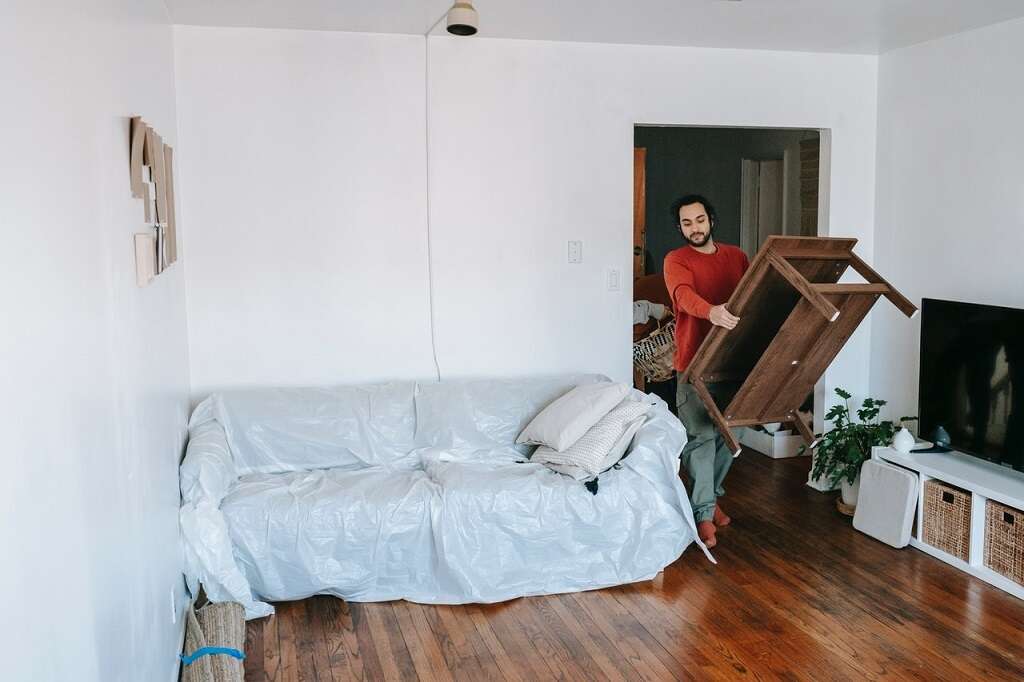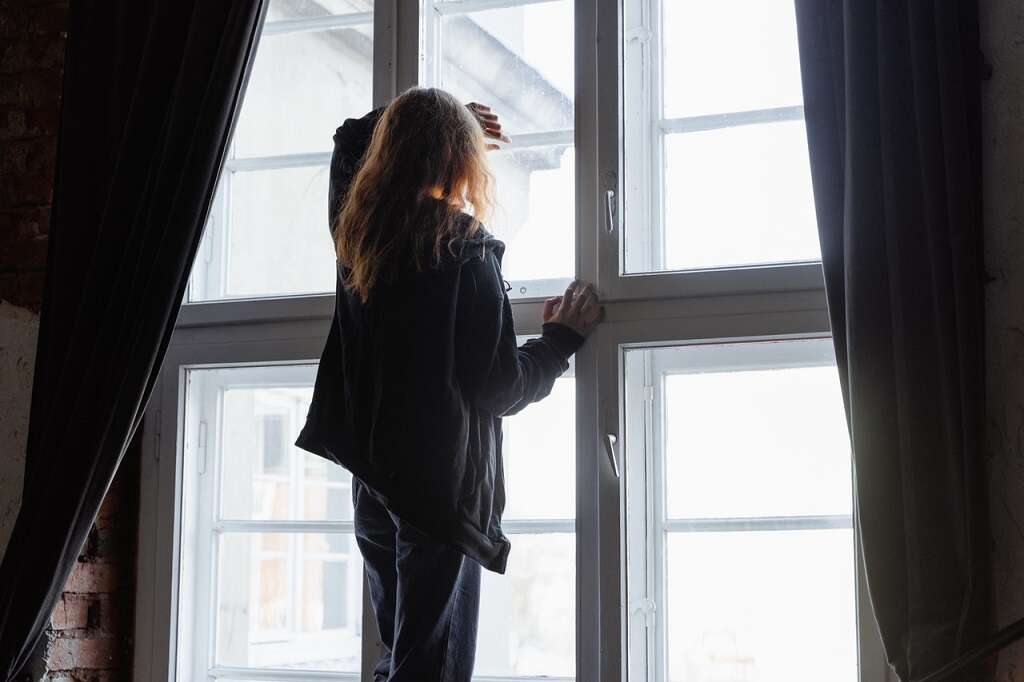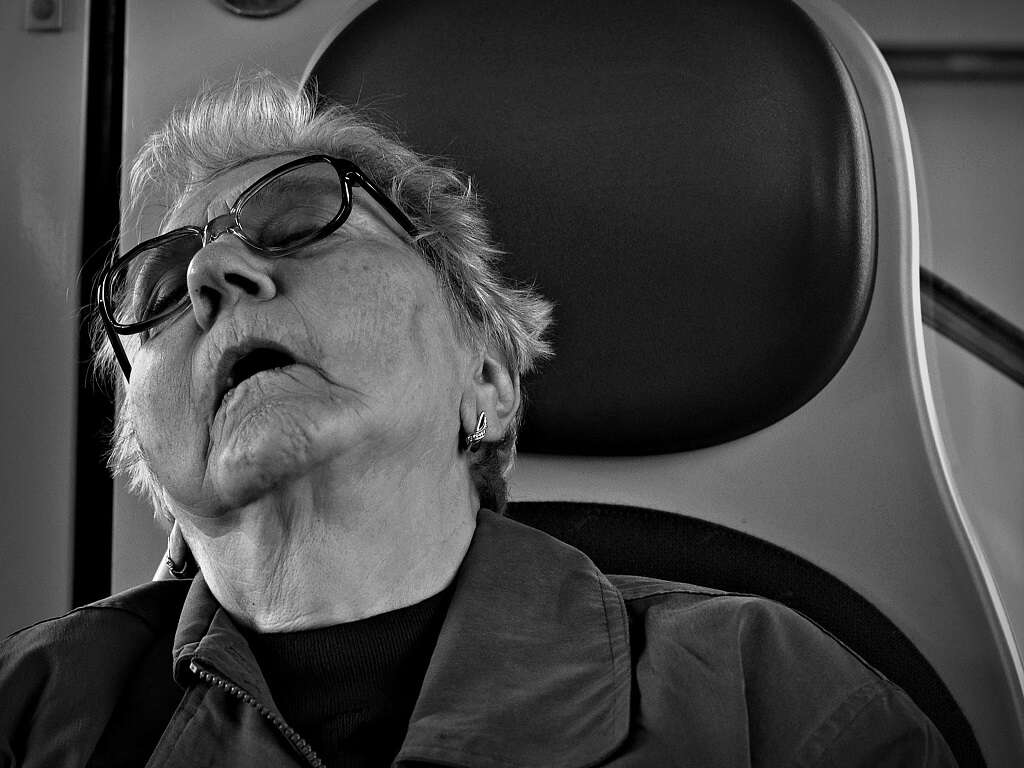10 Sleep Walking Symptoms
Sleepwalking is sometimes the subject of funny viral videos that capture an individual making elaborate meals or cleaning their house while catching a few winks. However, sleepwalking can be deeply impactful to those affected by it. Also known as somnambulism, sleepwalking occurs during deep sleep and is characterized by unusual behaviors carried out while asleep.1‘Sleepwalking Symptoms and Causes.’ Mayo Clinic, 21 July 2017, mayoclinic.org/diseases-conditions/sleepwalking/symptoms-causes/syc-20353506
Sleepwalking symptoms may not always be obvious, especially if no one is else around to witness the behavior. Since it may only happen occasionally, those who do it may not even realize they're sleepwalking. Learning sleepwalking symptoms can help address underlying causes and inform treatment options.

Getting Out of Bed
The most common sleepwalking symptom includes getting out of bed and moving around while completely asleep. These episodes may last for just a few minutes or longer, depending on the individual.1‘Sleepwalking Symptoms and Causes.’ Mayo Clinic, 21 July 2017, mayoclinic.org/diseases-conditions/sleepwalking/symptoms-causes/syc-20353506 The average length of a sleepwalking episode is around 10 minutes.2Suni, Eric. ‘Sleepwalking.’ Sleep Foundation, 14 August 2020, sleepfoundation.org/parasomnias/sleepwalking
Despite the moniker, sleepwalking isn't solely limited to walking. Individuals may also run, engage in sexual activity, move furniture or complete other household tasks. Additional possible sleepwalking behaviors include attempting to drive or even becoming violent. Individuals sometimes return to bed on their own with no intervention.2Suni, Eric. ‘Sleepwalking.’ Sleep Foundation, 14 August 2020, sleepfoundation.org/parasomnias/sleepwalking

Sleep Terrors
Sleep terrors may sometimes manifest along with episodes of sleepwalking. Since children are more likely than adults to engage in sleepwalking, this may be the reason for the relationship between night terrors and sleepwalking.1‘Sleepwalking Symptoms and Causes.’ Mayo Clinic, 21 July 2017, mayoclinic.org/diseases-conditions/sleepwalking/symptoms-causes/syc-20353506
Moreover, as is the case with sleepwalking in general, those who have sleep terrors don't remember the details in the morning. The inability to remember night terrors or sleepwalking sometimes makes it difficult to determine contributing factors to this condition.

Disorientation or Confusion
Individuals who sleepwalk may be disoriented or confused if they do wake up in the middle of an episode. They may not understand where they are in that exact moment or how they got there.1‘Sleepwalking Symptoms and Causes.’ Mayo Clinic, 21 July 2017, mayoclinic.org/diseases-conditions/sleepwalking/symptoms-causes/syc-20353506
Sleepwalkers sometimes remain confused for a few minutes after waking up as they attempt to get their bearings, especially if they're in unfamiliar surroundings. This symptom is common among those who wake up before getting back into bed.2Suni, Eric. ‘Sleepwalking.’ Sleep Foundation, 14 August 2020, sleepfoundation.org/parasomnias/sleepwalking

Difficulty Waking
Because sleepwalking typically occurs while individuals are in a deep sleep, waking them may be difficult.1‘Sleepwalking Symptoms and Causes.’ Mayo Clinic, 21 July 2017, mayoclinic.org/diseases-conditions/sleepwalking/symptoms-causes/syc-20353506 This is especially the case if the individual is engaging in a specific activity while asleep.
Sleepwalking happens during the third stage of sleep, which is the non-REM portion of the sleep cycle. Sleep terrors, sleep talking and other states of arousal indicative of a sleep disorder may also occur during this cycle.2Suni, Eric. ‘Sleepwalking.’ Sleep Foundation, 14 August 2020, sleepfoundation.org/parasomnias/sleepwalking

Struggles with Daytime Functioning
Another telltale sign of sleepwalking is excessive daytime sleepiness.1‘Sleepwalking Symptoms and Causes.’ Mayo Clinic, 21 July 2017, mayoclinic.org/diseases-conditions/sleepwalking/symptoms-causes/syc-20353506 It's unclear if the activity associated with sleepwalking is to blame for daytime sleepiness or if the underlying disorder actually causing the sleepwalking is responsible.2Suni, Eric. ‘Sleepwalking.’ Sleep Foundation, 14 August 2020, sleepfoundation.org/parasomnias/sleepwalking
Sometimes an individual's quality of life or ability to function effectively during the day is compromised because of the fatigue caused by sleepwalking. Some individuals even experience signs of insomnia because they haven't gotten the proper amount of rest.2Suni, Eric. ‘Sleepwalking.’ Sleep Foundation, 14 August 2020, sleepfoundation.org/parasomnias/sleepwalking

Sitting Up and Opening Eyes
One of the more jarring symptoms of sleepwalking occurs when an individual sits up in bed and opens their eyes.1‘Sleepwalking Symptoms and Causes.’ Mayo Clinic, 21 July 2017, mayoclinic.org/diseases-conditions/sleepwalking/symptoms-causes/syc-20353506 It may appear to others that the individual is awake, especially if they're mumbling or moving around.
One of the ways to know if the individual is truly awake or sleepwalking is to note their facial expression. Generally, in addition to glassy eyes, the individual may have a completely blank face. This suggests sleepwalking.2Suni, Eric. ‘Sleepwalking.’ Sleep Foundation, 14 August 2020, sleepfoundation.org/parasomnias/sleepwalking

Unresponsiveness
Another symptom of sleepwalking is unresponsiveness. An individual may mumble incoherently or remain entirely unresponsive, even if they're moving around or getting out of bed.2Suni, Eric. ‘Sleepwalking.’ Sleep Foundation, 14 August 2020, sleepfoundation.org/parasomnias/sleepwalking
If the individual doesn't respond to questions or stimuli around them, they're likely sleepwalking.1‘Sleepwalking Symptoms and Causes.’ Mayo Clinic, 21 July 2017, mayoclinic.org/diseases-conditions/sleepwalking/symptoms-causes/syc-20353506 However, this lack of responsiveness doesn't necessarily mitigate the person's ability to move around or engage in other physical actions while sleepwalking. This is also the reason monitoring is necessary, as a sleepwalking individual may not respond to verbal directions.

Inability to Remember Sleepwalking
Another major indicator of sleepwalking is the person's inability to remember what they did the night before during an episode. Most of the time, the individual learns about their sleepwalking behavior from a family member or sleep partner.2Suni, Eric. ‘Sleepwalking.’ Sleep Foundation, 14 August 2020, sleepfoundation.org/parasomnias/sleepwalking
This can make it challenging for those who live or sleep alone as they may not have anyone to tell them they're sleepwalking. They may not even realize they have an issue.

Sleepwalking Causes
Sleepwalking can be triggered by any number of issues, including stress, interruptions to regular sleep schedules or sleep deprivation. Physical illness, such as fever, may also sometimes cause sleepwalking episodes.1‘Sleepwalking Symptoms and Causes.’ Mayo Clinic, 21 July 2017, mayoclinic.org/diseases-conditions/sleepwalking/symptoms-causes/syc-20353506
Sleep-related conditions, such as obstructive sleep apnea, substance abuse and medications, including sedatives, may all contribute to sleepwalking episodes.1‘Sleepwalking Symptoms and Causes.’ Mayo Clinic, 21 July 2017, mayoclinic.org/diseases-conditions/sleepwalking/symptoms-causes/syc-20353506 Sleepwalking may also be genetic as children whose parents sleepwalk are also more likely to do the same.2Suni, Eric. ‘Sleepwalking.’ Sleep Foundation, 14 August 2020, sleepfoundation.org/parasomnias/sleepwalking

Treatments
Sleepwalking treatment depends on the severity of the issue and the underlying condition driving it. In most instances, if episodes occur occasionally, no treatment may be necessary. Sleepwalking in children often improves with age.2Suni, Eric. ‘Sleepwalking.’ Sleep Foundation, 14 August 2020, sleepfoundation.org/parasomnias/sleepwalking
Changes in medication or treatment for underlying conditions can sometimes mitigate this nocturnal behavior. In other cases, more creative techniques are necessary. For instance, anticipated awakening can be utilized, fully waking the person just before they have a sleepwalking episode.2Suni, Eric. ‘Sleepwalking.’ Sleep Foundation, 14 August 2020, sleepfoundation.org/parasomnias/sleepwalking












